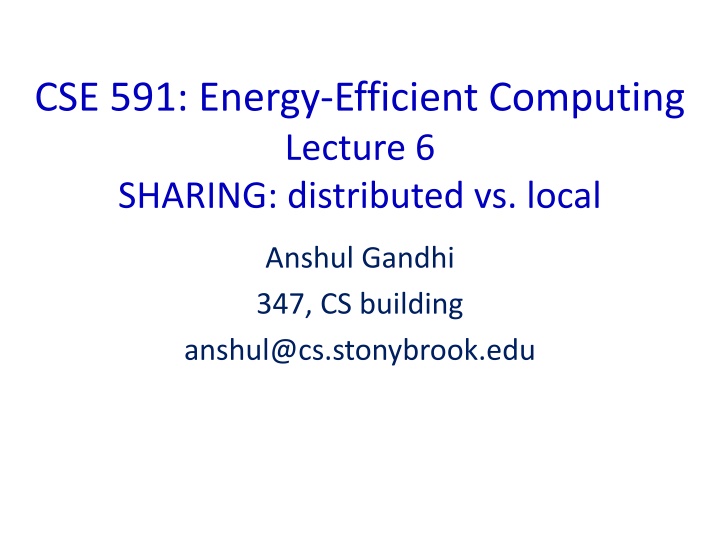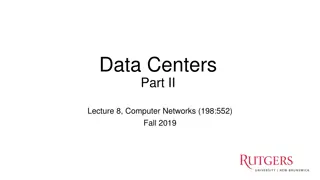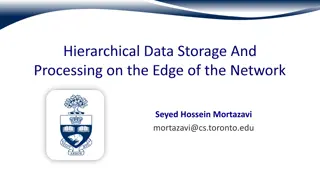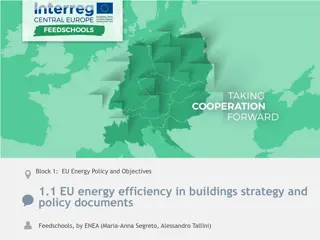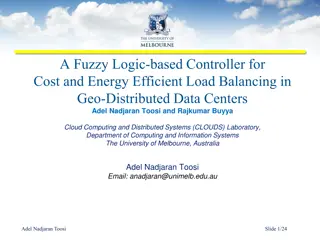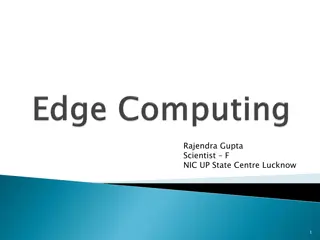Energy-Efficient Computing Strategies for Data Centers
This lecture discusses energy-efficient computing strategies for data centers, focusing on sharing resources between distributed and local systems. It covers topics such as workload distribution, electricity prices, network variations, and goals of a data center in terms of performance and power efficiency. The approach of SOFTScale is introduced as a way to manage load spikes without spare servers or forecasting, ensuring performance while minimizing waste.
Download Presentation

Please find below an Image/Link to download the presentation.
The content on the website is provided AS IS for your information and personal use only. It may not be sold, licensed, or shared on other websites without obtaining consent from the author.If you encounter any issues during the download, it is possible that the publisher has removed the file from their server.
You are allowed to download the files provided on this website for personal or commercial use, subject to the condition that they are used lawfully. All files are the property of their respective owners.
The content on the website is provided AS IS for your information and personal use only. It may not be sold, licensed, or shared on other websites without obtaining consent from the author.
E N D
Presentation Transcript
CSE 591: Energy-Efficient Computing Lecture 6 SHARING: distributed vs. local Anshul Gandhi 347, CS building anshul@cs.stonybrook.edu
Goals of a data center Performance Power Low response times Goal: T95 500 ms 70% is wasted Goal: Minimize waste Intel Xeon server Load BUSY: 200 W IDLE: 140 W OFF: 0 W Time 8
Scalable data centers Performance Power Only if load changes slowly Intel Xeon server Setup cost 300 s 200 W (+more) Load BUSY: 200 W IDLE: 140 W OFF: 0 W Time Reactive: [Leite 10;Horvath 08;Wang 08] Predictive: [Krioukov 10;Chen 08;Bobroff 07] 9
Problem: Load spikes 2x Load x Time 10
Prior work 2x Dealing with load spikes Spare servers [Shen 11;Chandra 03] Over provisioning can be expensive Load x Time Forecasting [Krioukov 10;Padala 09;Lasettre03] Spikes are often unpredictable Compromise on performance [Urgaonkar 08;Adya 04;Cherkasova 02] Admission control, request prioritization 11
Our approach: SOFTScale 2x No spare servers No forecasting Does not compromise on performance (in most cases) Load x Time Can be used in conjunction with prior approaches 12
Closer look at data centers Scalable Always on Use caching tier to pick up theslack 13
High-level idea OFF SETUP ON OFF SETUP ON OFF SETUP ON Dual purpose 2x Load x Leverage spare capacity Time 14
Experimental setup Apache Memcached (memory-bound) PHP (CPU-bound) Response time: Time for entry to exit Average response time: 200ms (with 20X variability) Goal: T95 500ms 15
Experimental setup Apache Memcached (memory-bound) PHP 8-core CPU 4 GB memory (CPU-bound) 4-core CPU 48 GB memory 16
Results: Instantaneous load jumps 61% Load 50% 10% 29% Time baseline = provisioned for initial load averaged over 5 mins T95 (ms) 17
Conclusion Problem: How to deal with load spikes? Prior work: Over provision, predict, compromise on performance Our (orthogonal) approach: SOFTScale Leverages spare capacity in always on data tiers Look at the whole system Can handle a range of load spikes 18
